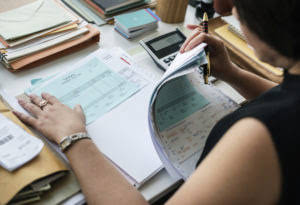Expanded Accounting Equation Components, Example, Importance

Each of these categories, inturn, includes many individual accounts, all of which a companymaintains in its general ledger. It’s a tool used by company leaders, investors, and analysts that better helps them understand expanded accounting equation the business’s financial health in terms of its assets versus liabilities and equity. The balance sheet reports the assets, liabilities, and owner’s (stockholders’) equity at a specific point in time, such as December 31. The balance sheet is also referred to as the Statement of Financial Position.
- Taking an example of a corporation X to see how its business transactions affect its expanded equation.
- Examples of supplies (office supplies) include pens, paper, and pencils.
- Let us understand the different components of the equation in detail which will facilitate in understanding the calculation done by companies.
- Some commonexamples of assets are cash, accounts receivable, inventory,supplies, prepaid expenses, notes receivable, equipment, buildings,machinery, and land.
Real-World Examples:
Some valuable items that cannot be measured and expressed in dollars include the company’s outstanding reputation, its customer base, the value of successful consumer brands, and its management team. As a result these items are not reported among the assets appearing on the balance sheet. Things that are resources owned by a company and which have future economic value that can be measured and can be expressed in dollars.

Arrangement #1: Equity = Assets – Liabilities

From a practical standpoint, the accounting equation helps accountants produce complete and accurate financial statements because it keeps all accounts in balance. If accountants want to ensure the balance Mental Health Billing sheet accounts are accurate, they can use the accounting equation and perform a high-level analysis. This is very helpful when preparing financial statements outside of an accounting software system. If financials are being prepared in Excel, mistakes can be made, and the basic accounting equation may become out of balance.
- Equipment is considered a long-term asset, meaning you can use it for more than one accounting period (a year for example).
- Revenues and expenses are often reported on the balance sheet as “net income.”
- Further, it also elaborates on the detailed aspects of any increase in cash flows on account of revenue earned or any decrease in cash flows on expenses incurred for running the operations.
- The accounting term that means an entry will be made on the left side of an account.
- Our examples assume that the accrual basis of accounting is being used.
- Understanding how each component interacts helps business owners and financial professionals make informed decisions about investments, financing, and operational strategies.
Corporation

It is currently used to comply with generally accepted accounting principles (GAAP). normal balance IDC MarketScape vendor analysis model is designed to provide an overview of the competitive fitness of technology and suppliers in a given market. The Capabilities score measures supplier product, go-to-market and business execution in the short-term. The Strategy score measures alignment of supplier strategies with customer requirements in a 3-5-year timeframe. Essentially, Accounting is all about tracking the changes to the Owner’s Equity.
As a result, the owner has a residual claim for the remainder of $10,000. Buildings, machinery, and land are all considered long-term assets. Machinery is usually specific to a manufacturing business that has a factory producing goods. Machinery and buildings are often called PPE – Property Plant and Equipment. Unlike other long-term assets such as machinery, buildings, and equipment, land is not depreciated.
He has been the CFO or controller of both small and medium sized companies and has run small businesses of his own. He has been a manager and an auditor with Deloitte, a big 4 accountancy firm, and holds a degree from Loughborough University. Economic analysts can get a clearer idea of how to use profits for various things like dividends which are reinvested into the firm or kept as cash by breaking down equity into smaller parts.
The accounting equation is so fundamental to accounting that it’s often the first concept taught in entry-level courses. It offers a quick, no-frills answer to keeping your assets versus liabilities in balance. Under the accrual basis of accounting, this account reports the cost of the temporary help services that a company used during the period indicated on its income statement. This is a contra owner’s equity account, because it has a debit balance if draws were made. Even though it is a balance sheet account, it is a temporary account. At the end of each year the account’s debit balance is closed to J.
Assets = Liabilities + Share Capital + Retained Earnings
From the above we can see that in the event that the liabilities are greater than the assets of the business, the net worth can be a negative figure. The expanded accounting formula diagram used in this tutorial is available for download in PDF format by following the link below. The equation is an important concept used to assess the financial condition of the company. Dividends, earnings distributed to the stockholders of the company.

